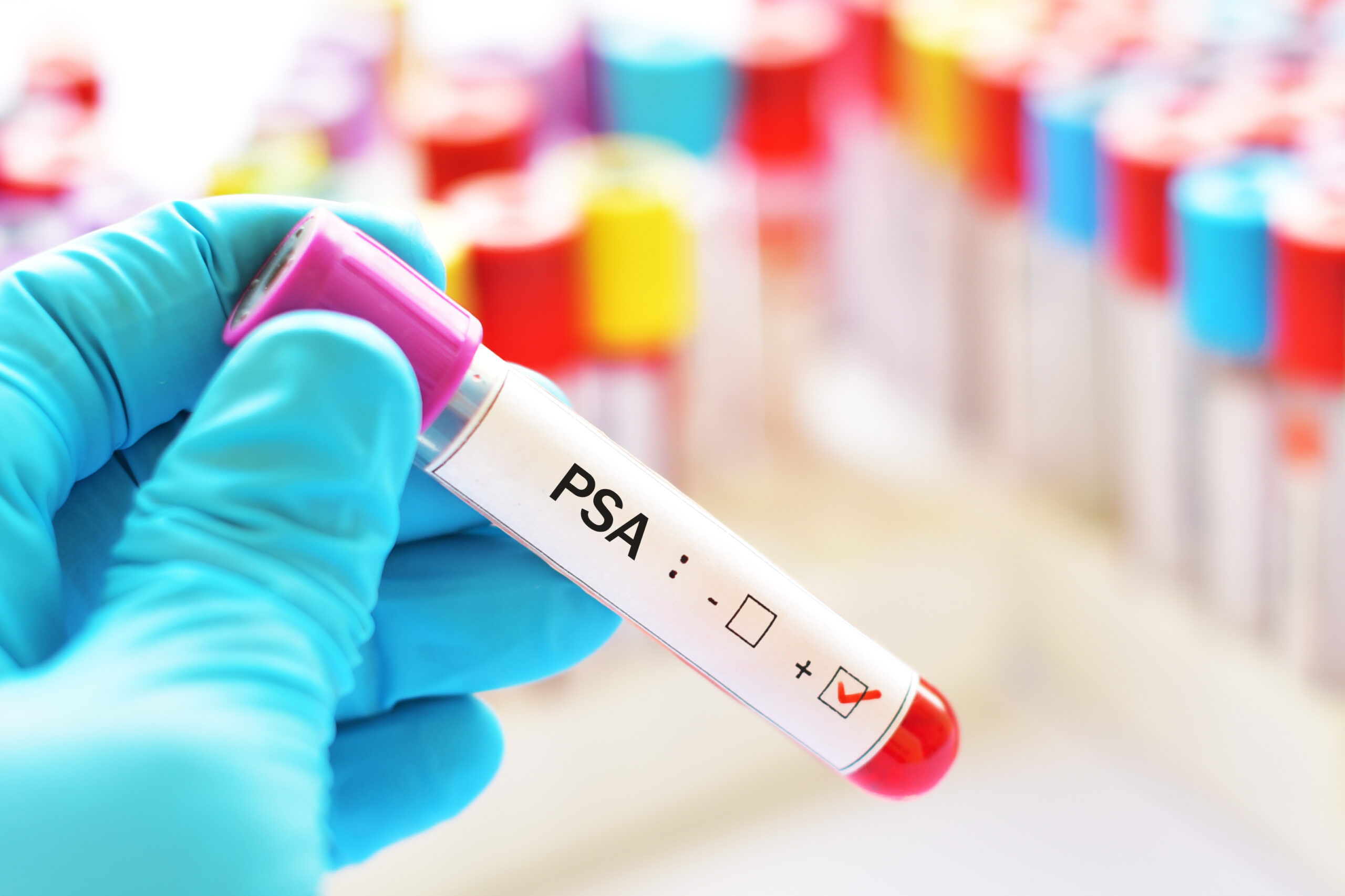What is PSA?
PSA, or Prostate Specific Antigen, is a protein enzyme produced by the prostate and found mostly in the semen, with very small amounts released into the bloodstream. It is used as a “disease marker” to check for prostate cancer. When there’s a problem with the prostate—such as the development and growth of prostate cancer—more PSA can be released. PSA eventually reaches a level where it can be easily detected in the blood. This can be the first indicator of prostate cancer.
PSA testing is the current test of choice for prostate cancer screening. During a PSA test, a small amount of blood is drawn from a vein (usually in the arm), and the level of PSA is measured. Doctors look at the PSA level over time, comparing with prior test results, and consider whether there could be a benign (non-cancer) explanation for a rising PSA. (Other causes include prostate inflammation, benign prostate enlargement, or a urinary tract infection). As the PSA number goes up, the chance that cancer is present increases.
Historically, men whose levels are confirmed to be above 4 ng/mL are often recommended to undergo further testing in the form of imaging and/or genetic tests, often with a prostate biopsy. However, this PSA “cutoff” does not mean that prostate cancer is definitely present, and, conversely, some cancers may be present even when levels are lower, particularly among younger men. It is important to highlight that the PSA test in this setting is a screening, not a diagnostic, test. Your physician will need to perform a prostate biopsy to confirm the presence or absence of prostate cancer. PSA testing is used after treatment for prostate cancer to monitor for disease recurrence, and to assess how the cancer is responding in patients undergoing treatment for advanced disease.
Last Reviewed: 12/2023






